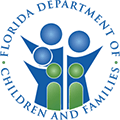Understanding Suicidal Ideations
Learn More about Suicidal Ideations
Suicidal ideation is a term that describes an unusual preoccupation of suicide that can range from fleeting thoughts to a detailed plan. These suicidal thoughts may involve unsuccessful attempts that are created to be discovered or plans that were meant to succeed. While most people who have suicidal thoughts do not go on to make attempts and ending their life, a good number of people do attempt suicide. While most commonly associated with depression, there are a number of mental disorders, life events, and stresses that may increase the risks for suicidal ideation. Suicidal thoughts may make you feel as though there’s no way out, however, there are a number of proven and effective ways to treat these thoughts, manage any underlying disorders, and develop the coping skills needed so that you are able to lead a happy, fulfilled life.
Statistics
Statistics on Suicidal Ideations
The World Health Organizations estimates that about 1 million people die by suicide each year. Suicide is clearly a major, preventable public health crisis. In 2007, suicide accounted for 34,598 deaths, making it the tenth leading cause of death in the United States overall. A projected 11 attempts at suicide are made for each death by suicide. For every 100,000 people, there are approximately 11.3 suicide deaths. In 2007, suicide was the seventh leading cause of death for males and the fifteenth leading cause for death among females; nearly four times as many men as women die by suicide. The gender disparities in suicidal behaviors are largely attributed to the fact that men use more lethal means to end their lives.
Causes of Suicidal Ideations
What are the Causes and Risk Factors of Suicidal Ideations?
There are a variety of reasons that people may begin to feel suicidal. Researchers believe that suicidal ideation is caused by a variety of factors working together to create these feelings. Causes for suicidal ideation include:
Genetic: A number of psychiatric conditions, including depression, schizophrenia, borderline personality disorder, and bipolar disorder are believed to be passed down from family members. One of the common symptoms of these different disorders is suicidal ideation. Additionally, many people who have suicidal ideation are also struggling with addiction to alcohol or drugs, which is thought to be a hereditary disorder.
Physical: After diagnosis with a chronic or terminal physical problem, such as cancer, people may begin to think about suicide as a means to end it before the physical problems become too much to bear. Additionally, changes in the levels – specifically lowered levels – of the neurotransmitter serotonin have been found in people who have suicidal ideation.
Environmental: Studies have determined that a number of environmental factors may increase the risk for a person to have suicidal thoughts. These may include major life stresses, such as the loss of a partner, or major life events such as divorce.
Risk Factors:
- History of child abuse
- Poor coping skills
- Poor problem-solving abilities
- Prior history of suicide attempts
- Domestic violence
- Firearms in the home
- Incarceration
- Impulsiveness
- Exposure to the suicidal behaviors of others, including family members, loved ones, and friends
Signs and Symptoms of Suicidal Ideations
Learn More About the Signs and Symptoms of Suicidal Ideations
Many people who are thinking about suicide show symptoms that speak to their intentions before an attempt is made. It is also important to note that a fair number of people who are experiencing suicidal ideation may not display any symptoms whatsoever. Symptoms of suicidal ideation should always be taken seriously, and if you think your loved one is in danger of hurting themselves, this is a medical emergency.
Behavioral Symptoms:
- Talking about killing oneself or harming oneself
- Talking about death and dying
- Seeking out items that could be used in a suicide attempt
- Loss of interest in daily activities
- Writing stories, poems, or internet postings about death and dying
- Increased drug or alcohol usage
- Getting affairs in order – making out a will, giving away favorite possessions, making arrangements for family members
- Saying goodbye – calling or visiting friends and loved ones and saying goodbye as if they won’t be seen again
- Withdrawing from friends and family members
- Increasing social isolation
- Desire to be left alone
- Reckless driving
- Unsafe sex
- Sudden sense of calm and happiness after being severely depressed
- Taking unnecessary risks
Physical Symptoms:
- Neglecting physical appearance
- Changes in sleeping or eating habits
- Weight loss or gain
Cognitive Symptoms:
- Preoccupation with thoughts of death and dying
- Belief that one is helpless or trapped
- Belief that nothing will improve
- Belief that one is a “burden” to others
Psychosocial Symptoms:
- Hopelessness
- Worthlessness
- Shame
- Self-hatred
- Guilt
- Drastic mood changes
- Sudden changes in personality – going from withdrawn to outgoing
- Feeling that the future is a bleak place
- Feeling as though there is nothing to look forward to
- Untreated mental illnesses
Effects of Suicidal Ideations
Understanding the Effects of Suicidal Ideations
Suicidal ideation, if left untreated, can lead to a number of negative consequences for all involved. Effects of suicidal ideation can include:
- Strained interpersonal relationships
- Mood swings
- Social isolation
- Lower levels of interpersonal, social, and occupational functioning
- Substance abuse and addiction
- Alcoholism
- Consequences of risky behaviors
- Organ failure
- Worsening of emotional and physical well-being
- Bodily injury
- Severe disability
- Coma
- Death
Effects on Suicide Survivors:
A suicide survivor is a person who has lost someone they dearly love to suicide. It’s been estimated that for every completed suicide, 6-8 suicide survivors are left behind. Many people who lose someone to suicide struggle with complicated grief, as suicide survivors may blame themselves for not preventing the suicide. Other effects on suicide survivors include:
- Self-blame; feelings of responsibility
- Guilt for not preventing the death
- Shame
- 5 stages of grief – anger, denial, bargaining, depression, acceptance may last a bit longer than other types of bereavements
- Inability to talk to others about grief and loss due to stigma of suicide
Co-Occurring Disorders
Suicidal Ideations and other Co-Occurring Disorders
Mental disorders are very common among those who have suicidal ideations. Over 90% of people who die by suicide suffer from a co-occurring disorder, which is why all mental health concerns should be taken seriously and treated as soon as they can be. These co-occurring disorders include:
- Depressive disorders
- Bipolar disorder
- Schizophrenia
- Schizoaffective disorder
- Anxiety disorders
- PTSD
- Panic disorder
- Substance abuse
- Alcoholism
- Borderline personality disorder
- Antisocial personality disorder
- Eating disorders
- Adjustment disorder











